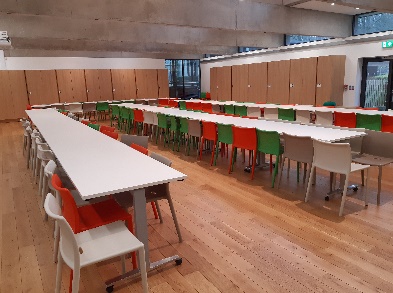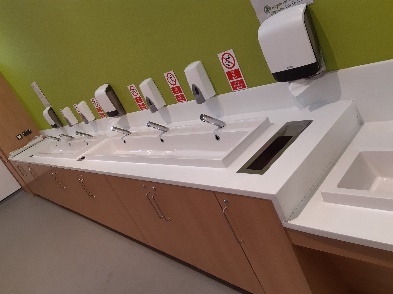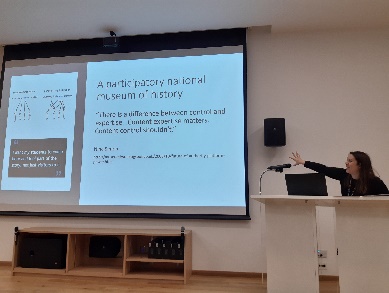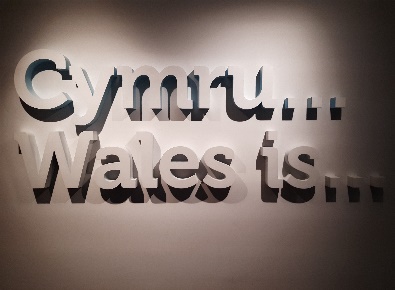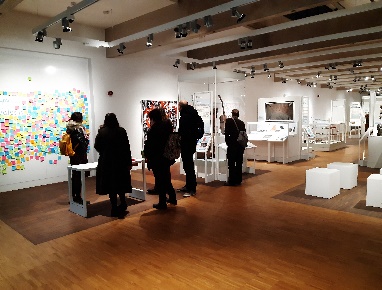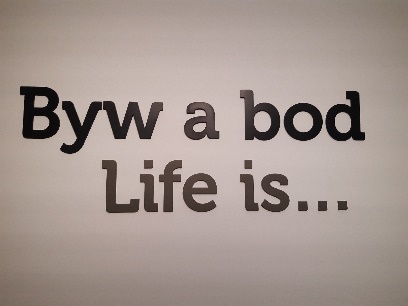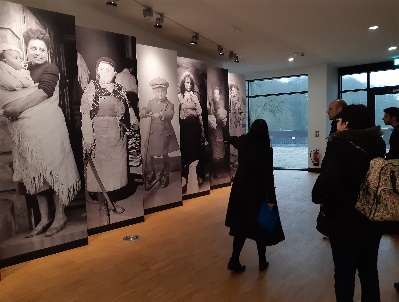2019 was a good year for museums in Cardiff: the recently refurbished St Fagan’s National Museum of History won the Art Fund Museum of the Year Award, the Museum of Cardiff was nominated in the Museums Change Lives awards for ‘Best Small Museum’, their museum manager Victoria Rogers won the ‘Radical Changemaker’ award and the National Museum Cardiff welcomed Dippy on tour. I thought this made Cardiff an ideal site for a study trip and was delighted when this proposal was accepted. Although I have enjoyed a number of study days as a SEMFed Committee member, I had not yet been on a study trip, and I was excited to organise a series of exciting and informative visits.
I’m the Museums Officer with the Eton College Museums and I was excited to learn from a range of institutions in Cardiff, particularly looking at their community learning and engagement programmes, co-curation, and contemporary collecting. Each of our hosts offered a friendly welcome and so much time and information to the group. Our trips started on Thursday, just outside the city centre at St Fagans.
St Fagan’s National Museum of History
We were met by Elen Philips, Principal Curator of Contemporary and Community History of National Museum Wales, and started with a quick look at the new Weston Centre for Learning, where we gazed in envious awe at their three new learning studios, and saw how they used collections in activities and archaeology workshops. Every space is multi-function with uniform furniture throughout for flexibility.
Elen kindly gave us a presentation on the history of St. Fagans, their recent redevelopment, and how their original and new aims coincide. The curatorial team was restructured, in roles that moved away from traditional collections disciplines to include strategic roles. Much of the new direction in the redevelopment was governed by the large gaps in representations of Welsh history and peoples. The key word in their planning and practice was participation.
The three new galleries bring history and archaeology together in a new approach for St Fagans. Wales is… is identified as the head, Life is… as the heart, and Gweithdy as the hands. The interpretive text includes multiple voices: that of the curator, the community, the expert and the visitor, and all text is presented in both Welsh and English. They worked within very restricted word limits, meaning they had to also signpost where to find more information.
Wales is… tackles the challenge of telling a ‘national history’ in a gallery when it is a multiple narrative. They’ve done this by displaying a series of ‘windows’ into a key moment, driven by objects in their collection, which encourage visitors to challenge evidence, question history, and leave their own input on the displays. Asking the visitor questions aims to relate the collections to life today, and generate contemporary viewpoints and responses to the objects. The team take weekly photos of the post-it responses which are stored digitally, then they weed-out and recycle the paper leaving room for more to be added. There is a social space in the centre of the gallery which can be used for activities and the sections of whiteboard wall provide a blank canvas for artist takeovers which add to the ways to collect contemporary responses.
The Life is… gallery is aimed at families and younger visitors and looks at aspects of life from birth to death. There’s lots of opportunity for children (and adults!) to do things throughout the gallery, from activities to climbing on giant deckchairs. Each themed zone has its own colour, wallpaper and activity which creates a great feel for the theme without resorting to much text. A top tip from this gallery was to use benches which double up as lockable storage bins!
Gweithdy is a newly built
gallery with displays divided by material, celebrating the creativity and
knowledge of makers. Throughout the gallery subtle sounds of working materials
are played. It includes a workshop and forge, emphasising the focus on working
by hand. The objects and materials are presented as personal stories, linked
with craftspeople. The sound of tools working adds another dimension to the
materiality of the gallery.
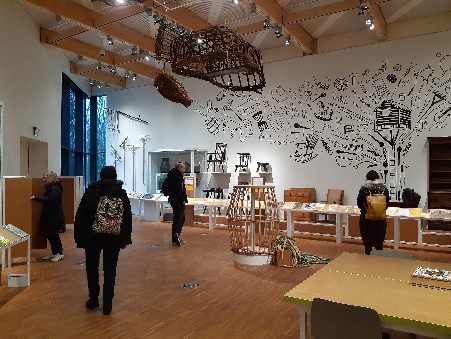
Llys Llywelyn, a recreation of 13th century court buildings, is very popular among the historic buildings and is used for learning sessions and even school sleepovers. It includes textiles produced in community projects that combined academic study with hours of work from volunteers and designs from schools. We also had the opportunity to explore the rest of the grounds but it became clear I’d need another full day to see everything properly!
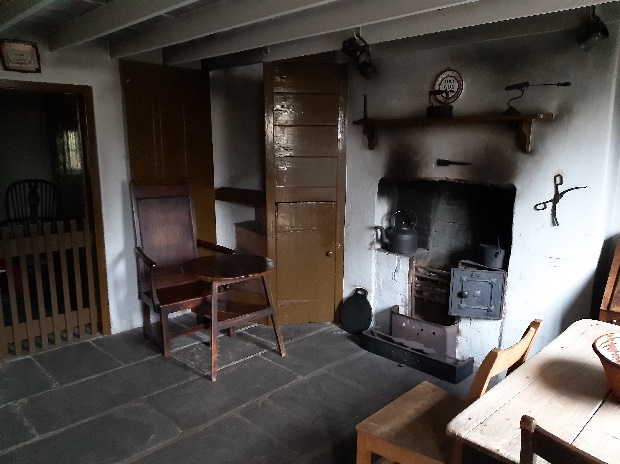
Techniquest
In a complete change of scene we visited Techniquest, a science centre which is amid a redevelopment. Clare James, Head of Engagement & Partnerships, took us through the history of Techniquest and their new aims and activities. Both St Fagans and Techniquest reference Nina Simon in their museological approaches. When they lost their funding grant they sought creative ways to become sustainable, which has led them on a journey to identify and engage the variety of local communities on their doorstep who had not been aware of them. Now community engagement is at the heart of their programming. We discussed how the team had to build relationships with communities around them, training in Participatory Action Research with Cardiff University – this training made connections with individuals who were a route into contacting different groups. Projects such as the new photography gallery bring a community focus to the heart of the building.
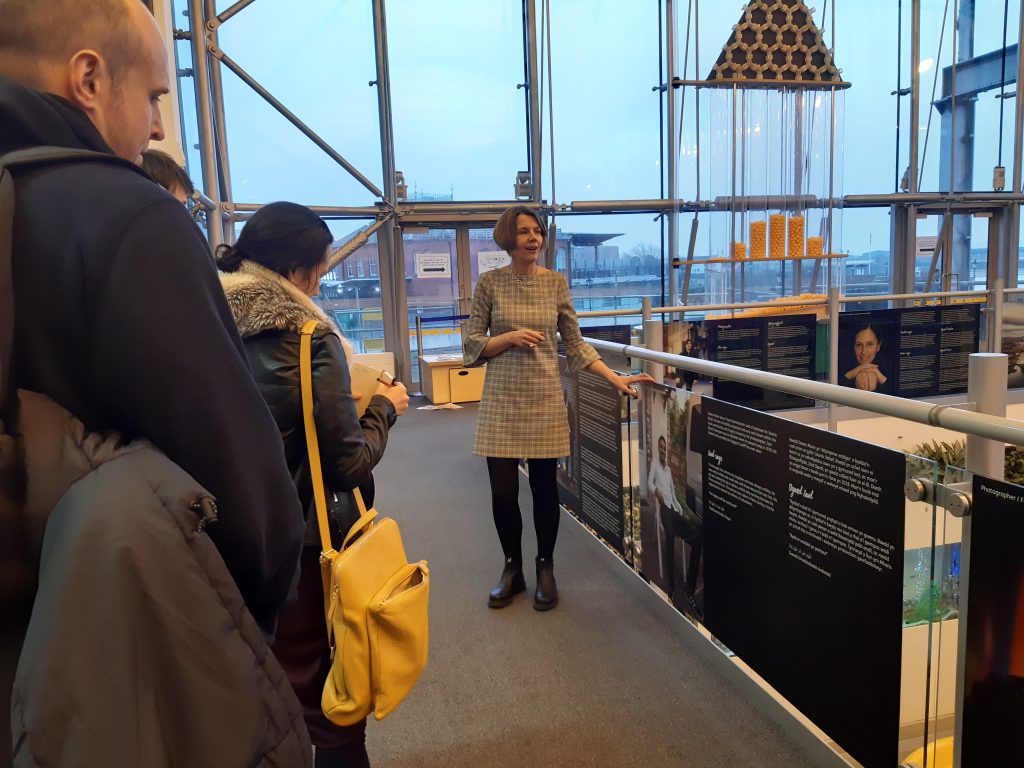
Clare emphasised the fundamentals: being relevant (it’s not enough to be free and close by!), to ensure they are a welcoming community hub and that they are signposting what they have to offer.
Once we left Techniquest we had the chance to explore the rest of Cardiff Bay, including the Roald Dahl Plass and Pierhead Building.
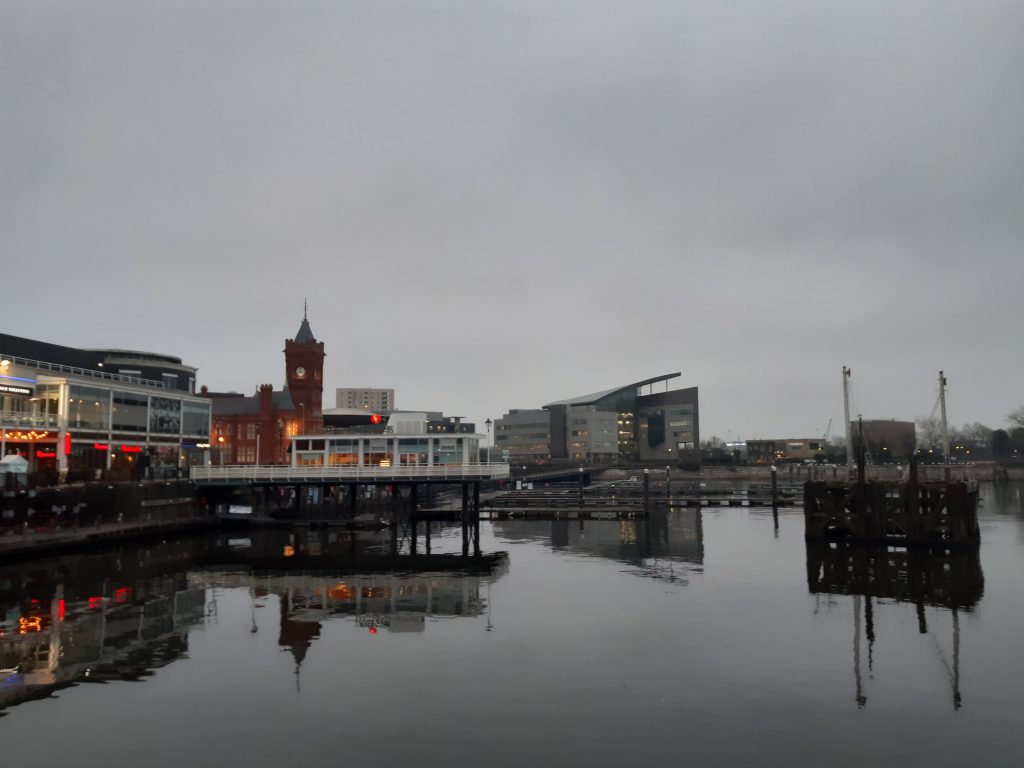
Museum of Cardiff (The Cardiff Story)
On Friday we stayed in the city centre, starting with the Cardiff Museum. Alison Tallontire, Exhibition Officer, and Sam, Collections Curator, gave us their whole morning (plus tea, coffee and welshcakes!) first giving us a history of the museum and discussing their activities in their classroom/meeting room before touring the galleries. We had incredibly insightful and helpful discussions about their experiences, including challenges, in this local museum.
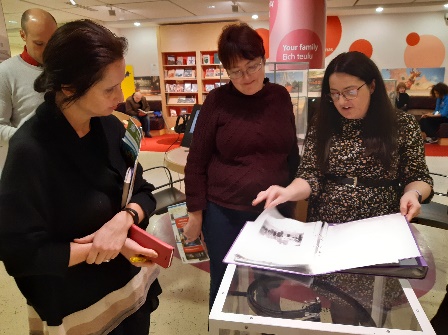
As a new museum they opened in 2011, working closely with National Museums Wales, borrowing objects for display. The current galleries on themes including transport, the docks, the city and housing form phase one of their aims (borne of extensive public consultation); phase 2 will see exhibits reflecting sport, theatres and other aspects of Cardiff life and history.
The need to fundraise emphasised a focus on contemporary collecting and community engagement, with changing, responsive displays to what is happening in the city. Twitter has been one way to stay connected to current events, and reaching out to people in the community for collecting objects such as protest banners. Key to their collecting is to ensure they capture stories, not just objects. They tell people’s stories – in their own words — through touchscreens relating to the objects on display, alongside telling the wider Cardiff story.
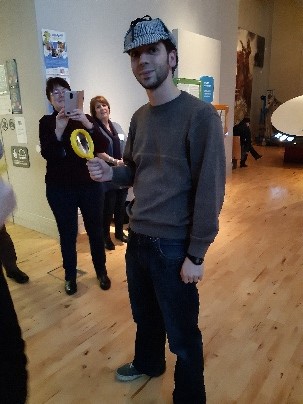
They also reach a wider audience with temporary exhibitions in other civic buildings and pop up banner displays at various locations in the city. They take reminiscence boxes into libraries, care homes and run a monthly session in the museum. The galleries themselves include activity areas, local history research desks, a community exhibition space and the opportunity to be a museum detective with your own explorer pack.
National Museum Cardiff
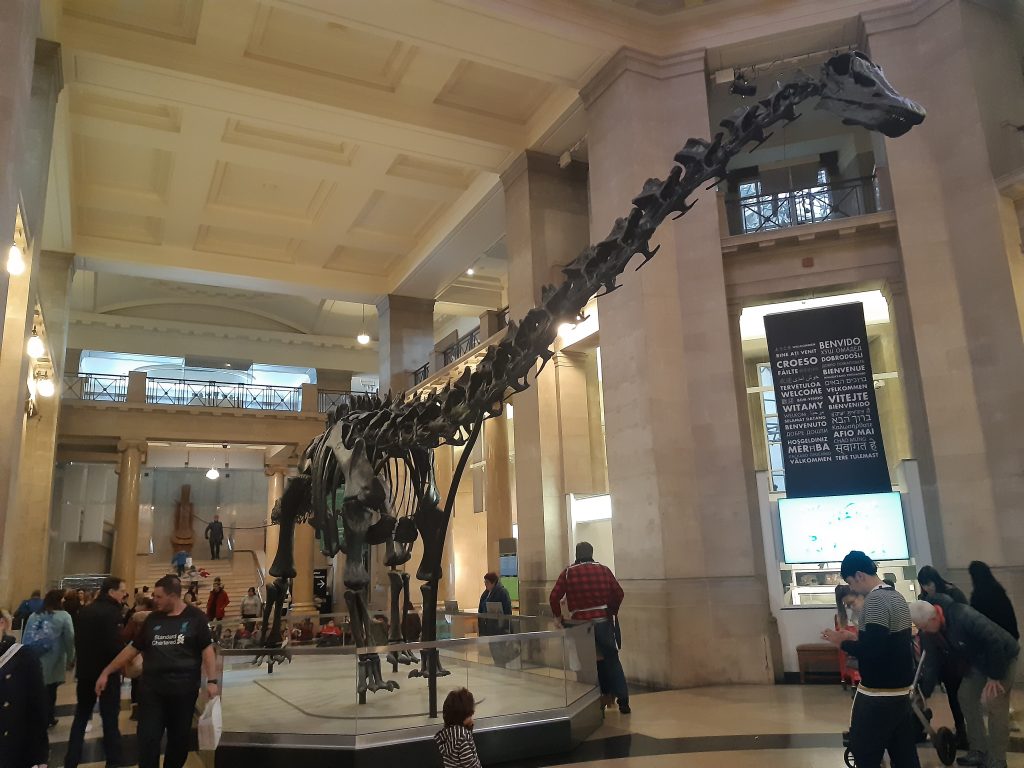
Our final organised visit was to the National Museum Cardiff, to see Dippy. Liam Doyle, Volunteer and Activities Officer for Dippy on Tour!, explained how having Dippy has been a great boost for the museum, with a number of associated events and activities, and took us to see the exhibition that accompanied Dippy.
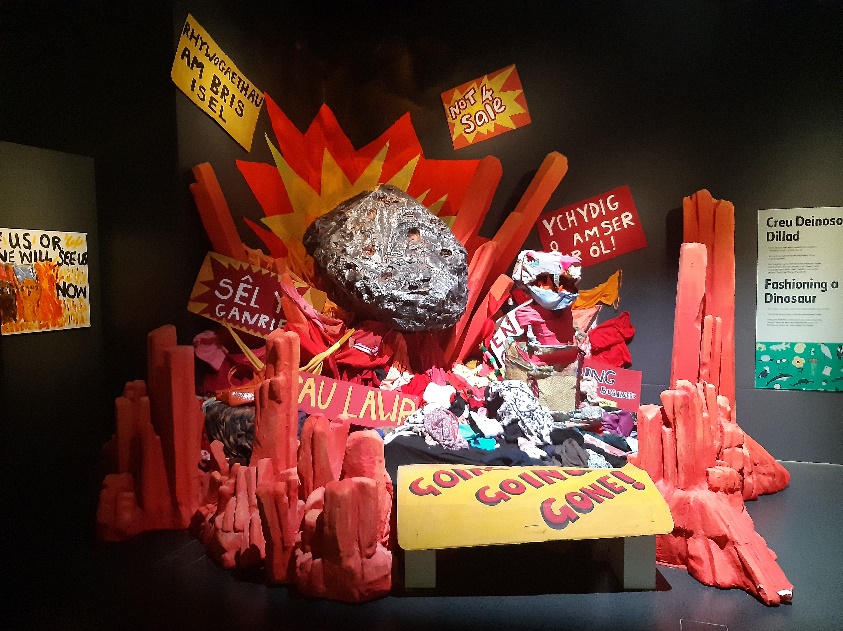
The NHM (London) tasked National Museums Wales to come up with an exhibit themed on nature, climate change and activism, which they handed over to their 16–25 Youth Forum. The result is an incredibly ambitious and thoughtful display, reflecting how engaged the young curators were with the theme of environmental activism. This was an outcome of having Dippy on tour that I was not expecting, which I felt has a longer-lasting legacy for the museum than Dippy himself. The exhibition space had a built-in activity cupboard, which included wheel-out trolleys with creative and object-handling activities that could be taken out by volunteers to the gallery and returned at closing.
Liam gave us a chance to see Dippy through an AR handset, and also to see the Clore Discovery Centre – a handling gallery full of artefacts, reference books and activities. It’s a great space where you can pick things up and ask questions.
This is where we concluded our trip, and say goodbye as a group. It was really fantastic to spend time with everybody for these visits, and I got so much not only from our hosts but also from discussions with fellow SEMFed members, and benefitted from their questions and responses to each venue. Receiving this bursary enabled me to take part in this trip for which I am very grateful, I feel I will benefit directly from it in my work.
Cardiff Castle
I snuck in a trip to the Castle after the trip finished – I couldn’t miss it! It’s well worth a visit a great venue, and the best bit you can see for free – the animal wall that circles the castle.
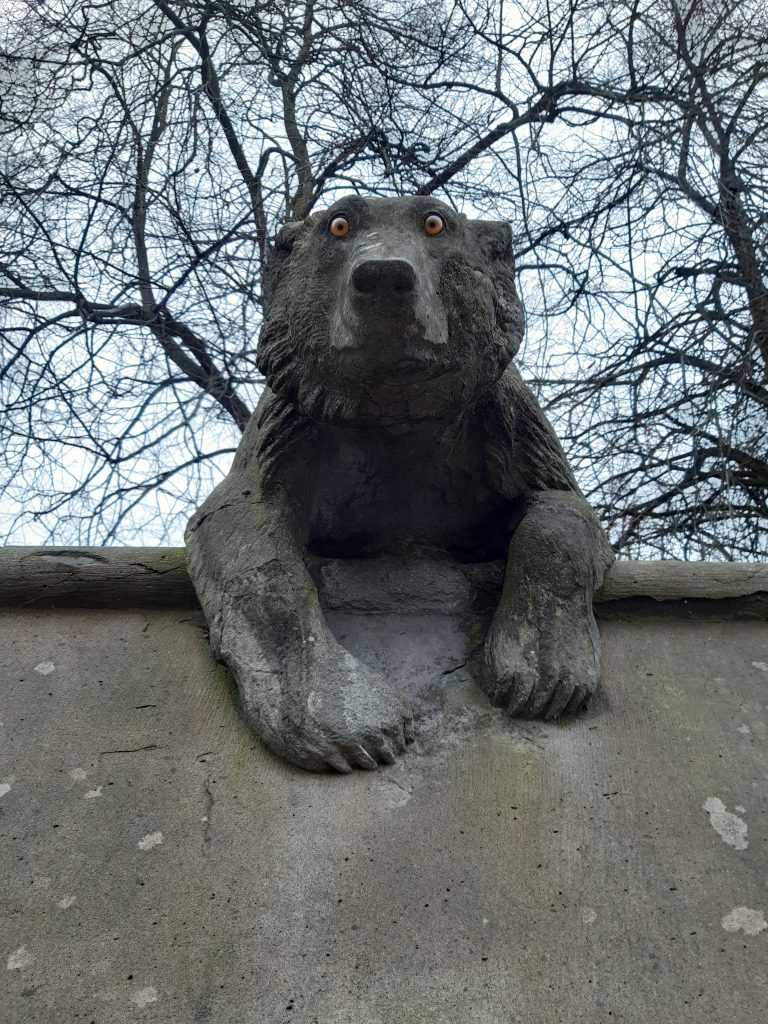
Martin Howe bursary report by Rebecca Tessier
